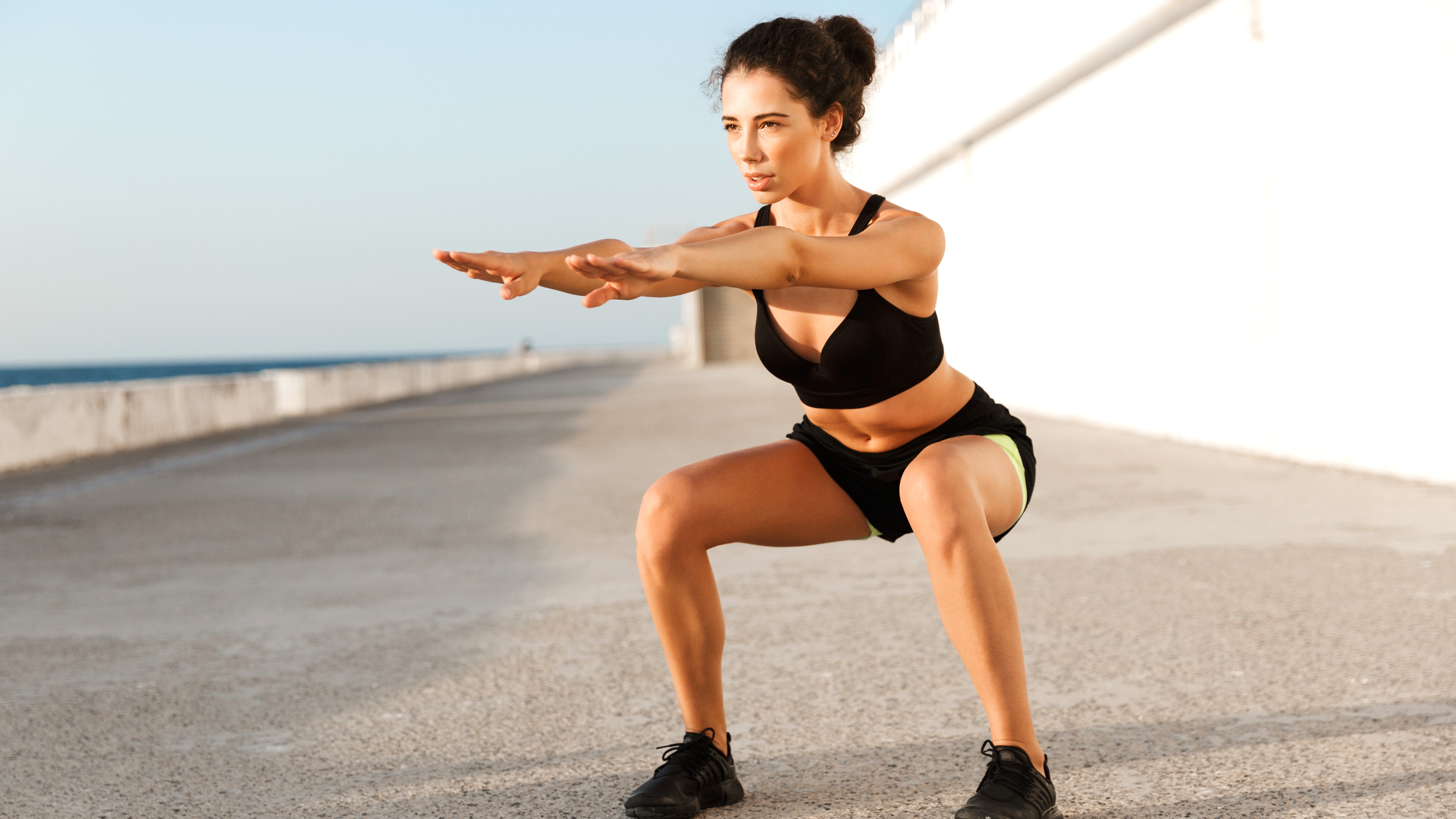
It’s that time of year again — the gyms are busy, and you’re determined to make 2024 your healthiest year yet. However, the good news is this doesn’t have to mean hours of sweating and lifting weights — you can get amazing results from home, using simple equipment like resistance bands or just your body weight.
If you’re looking for a quick workout you can try between meetings, or just want to get started with some shorter workouts you slot into your day, I’ve found exactly what you’re looking for. This five-minute workout targets the muscles in your glutes. Not only are your glutes the largest muscle in your body, but they can help improve your posture, and reduce back and knee pain. That said, if you spend a lot of time sitting behind your desk, you’ll probably find your glutes are pretty lazy, so working on your glute strength is important when it comes to avoiding injury.
The workout, created by Personal Trainer Caroline Idiens, takes just five minutes and uses five different exercises to sculpt strong glute muscles. If you have some of the best resistance bands or a couple of the best adjustable dumbbells, these can increase the intensity of your workout, but if you don’t, you’ll still get a good workout using just your body weight. If you want to work out for longer, you can, of course, repeat the circuit more times.
What is the workout?
Ready to get started? Read on to find the different exercises involved. You’ll complete the circuit three times in total, without any breaks, for a five-minute glute burn.
20 tap outs
For this exercise, start with a small loop resistance band around your calves, and set your feet wider than hip-width apart, as if you’re doing a sumo squat. Your feet should be turned out slightly. From here, squat down into a low squat position, then step one foot out to the side, then the other, alternating which leg taps out. Stay in a low squat throughout the exercise. You should be able to feel your glutes working hard, but also ensure your belly button is sucked into your spine and you’re keeping your core engaged.
20 sumo squat pulses
As you did above, loop a resistance band around your calves, squat down into a sumo squat, and complete 20 pulses — to do this, lower your glutes down a few inches, then raise back up. Don’t return to a full standing position; stay in a squat throughout to increase the time your glutes are spending under tension.
20 sumo heel lifts
Keeping the resistance band in place, complete 20 more sumo squats, but this time, squat down and then stay in a low squat position. Rise onto your tiptoes, lifting your heels an inch off the ground. This gives your calves an extra workout.
10 sets stay low jabs
You guessed it: staying in the low sumo squat position, and grab a set of light dumbbells, or just use your bodyweight or a couple of water bottles. Jab one arm and then the other out in front of your body, and then jab your arm out to the opposite side of your body, twisting your torso and keeping your core engaged. Repeat on the opposite side, and then return to your front punches.
10 wall squat front raises
If you have an additional resistance band to the one looped around your calves, loop it around your wrists for this exercise and get into a wall squat. To do this, stand about a foot away from a wall and get into a low squat position, with your back pressed against the wall. Hold here, squeezing your glutes. Keeping your core engaged, extend your arms out in front of you with the resistance band looped around your wrists. Keeping some pressure on the band, raise both arms above your head so they touch the wall, then back down to your starting position. Hold the squat throughout the 10 reps.
What are the benefits?
As mentioned above, there are several benefits to working on your glute strength. Your glutes are responsible for your power and speed as you run, jump and accelerate, so whatever sport you’re playing, increasing your glute strength can help your athletic performance.
Your glutes can also improve your balance and posture, as they help keep the pelvis stable as you move. If you’re not activating your glutes, or you’re glutes are particularly lazy after long periods of being sat down, you’ll often find your hip flexors overcompensate and can become sore. Tight hip flexor muscles can also cause lower back pain, so strengthening your glutes can help prevent back and knee pain.
Finally, like all of the muscles in your body, completing strength training exercises like these can help boost your metabolism, and promote weight loss. As a reminder, if you’re looking to lose weight, you’ll need to focus on your diet and cardio levels as well, but strength training is a great place to start.







